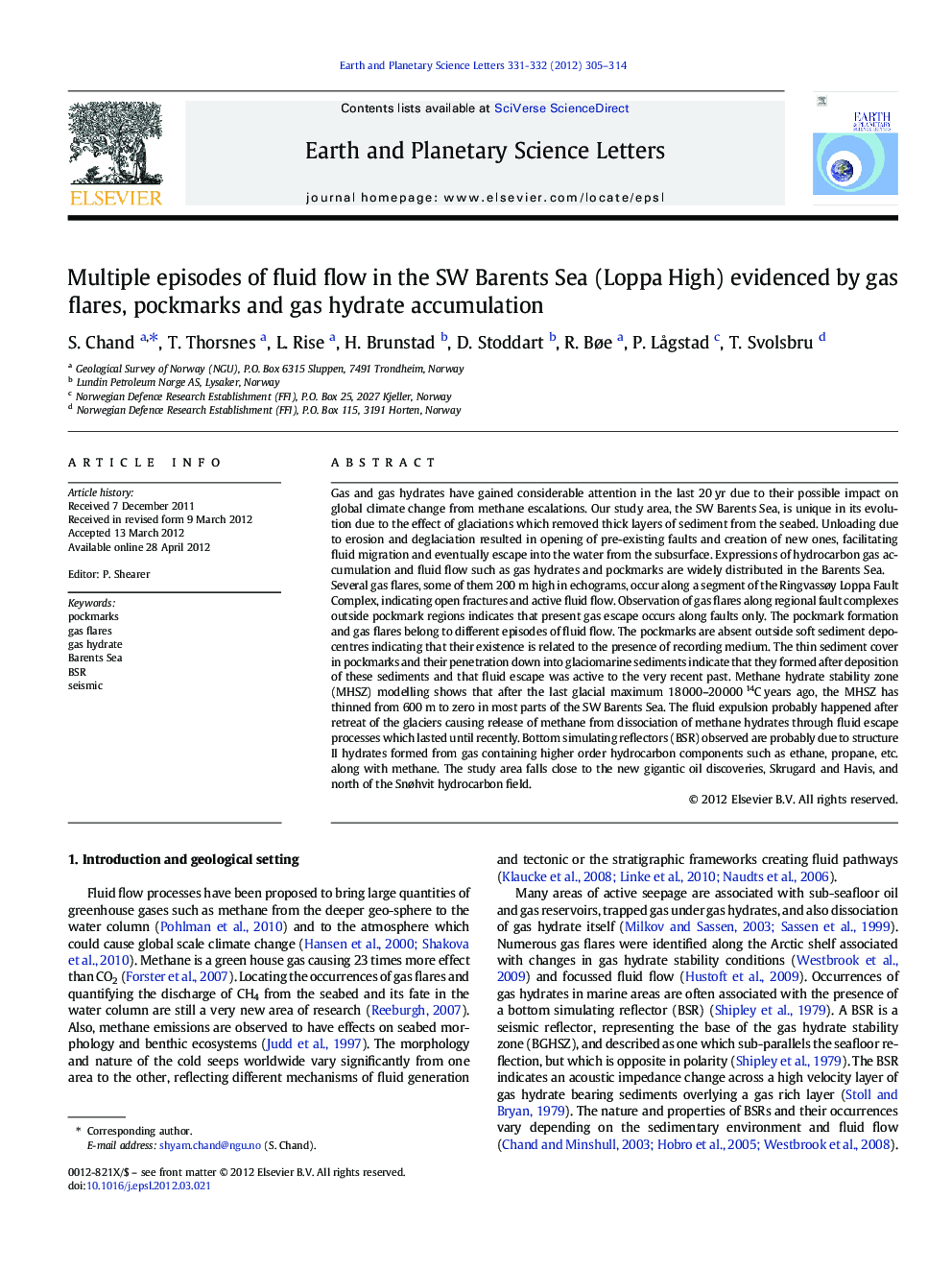| کد مقاله | کد نشریه | سال انتشار | مقاله انگلیسی | نسخه تمام متن |
|---|---|---|---|---|
| 4677494 | 1634805 | 2012 | 10 صفحه PDF | دانلود رایگان |

Gas and gas hydrates have gained considerable attention in the last 20 yr due to their possible impact on global climate change from methane escalations. Our study area, the SW Barents Sea, is unique in its evolution due to the effect of glaciations which removed thick layers of sediment from the seabed. Unloading due to erosion and deglaciation resulted in opening of pre-existing faults and creation of new ones, facilitating fluid migration and eventually escape into the water from the subsurface. Expressions of hydrocarbon gas accumulation and fluid flow such as gas hydrates and pockmarks are widely distributed in the Barents Sea.Several gas flares, some of them 200 m high in echograms, occur along a segment of the Ringvassøy Loppa Fault Complex, indicating open fractures and active fluid flow. Observation of gas flares along regional fault complexes outside pockmark regions indicates that present gas escape occurs along faults only. The pockmark formation and gas flares belong to different episodes of fluid flow. The pockmarks are absent outside soft sediment depocentres indicating that their existence is related to the presence of recording medium. The thin sediment cover in pockmarks and their penetration down into glaciomarine sediments indicate that they formed after deposition of these sediments and that fluid escape was active to the very recent past. Methane hydrate stability zone (MHSZ) modelling shows that after the last glacial maximum 18 000–20 000 14C years ago, the MHSZ has thinned from 600 m to zero in most parts of the SW Barents Sea. The fluid expulsion probably happened after retreat of the glaciers causing release of methane from dissociation of methane hydrates through fluid escape processes which lasted until recently. Bottom simulating reflectors (BSR) observed are probably due to structure II hydrates formed from gas containing higher order hydrocarbon components such as ethane, propane, etc. along with methane. The study area falls close to the new gigantic oil discoveries, Skrugard and Havis, and north of the Snøhvit hydrocarbon field.
► First identification of gas flares along Barents Sea indicating active fluid flow.
► Pockmarks, flares and gas anomalies indicate fluid expulsion in a two stage process.
► Pockmark concurrence with stratigraphy indicate formation after glaciomarine units.
► Pockmarks indicate active fluid flow until recent past.
► Unified model for focussed fluid flow along the continental margins.
Journal: Earth and Planetary Science Letters - Volumes 331–332, 15 May 2012, Pages 305–314